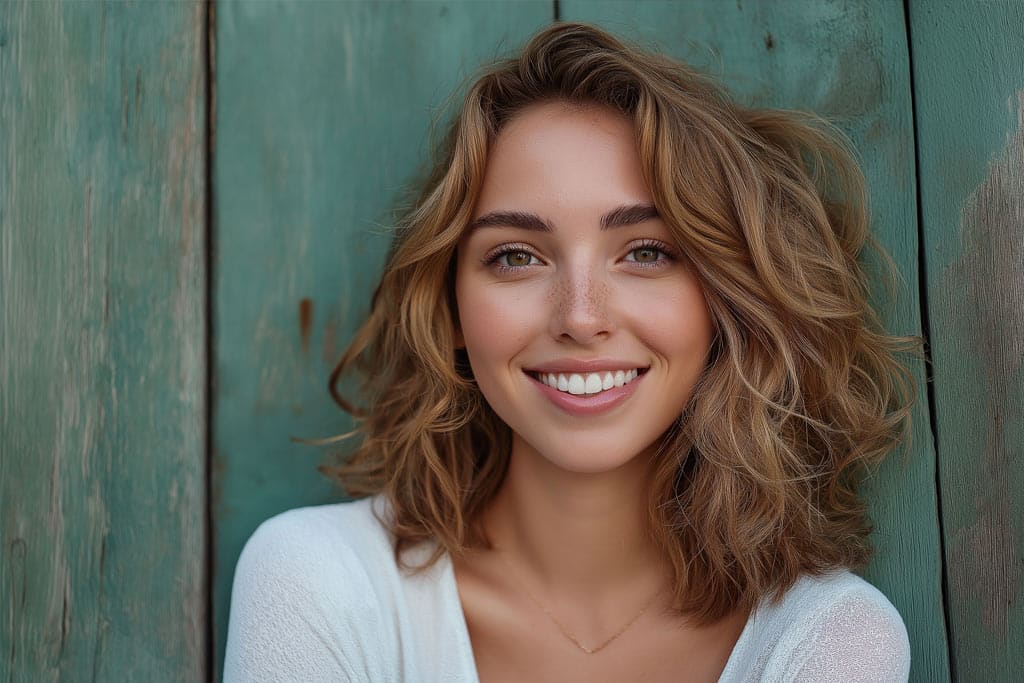
Non-surgical facial volumizing is more popular than ever, with patients looking for effective, minimally invasive solutions to combat aging. Juvederm Voluma, Radiesse, and Sculptra are top contenders, each offering unique benefits. This guide breaks down their differences, helping clinicians choose the right option based on patient needs and treatment goals.
Pathophysiology of Midface Volume Loss
Midface aging is a complex process influenced by multiple factors, including changes in bone structure, fat distribution, and skin elasticity. As we age, these layers undergo gradual shifts—bone loss reduces structural support, fat pads shrink and shift downward, and skin loses collagen and elasticity. Together, these changes contribute to volume loss, sagging, and a less defined midface contour. Understanding these underlying factors is key to selecting the right treatment approach. Let’s take a look.
1. Bone Resorption
As we age, the bones in our face gradually shrink, leading to a loss of structural support. By age 50, up to 10–15% of midface bone volume is gone, with the most noticeable changes occurring in the upper cheek and under-eye area. This gradual resorption contributes to sagging skin and a hollowed appearance.
2. Fat Loss and Shifting
As we age, the fat in our cheeks diminishes and shifts. By age 60, up to 30% of facial fat volume is lost, especially in the mid and outer cheeks. At the same time, weakened ligaments allow fat pads to drop, leading to sagging and a less youthful, hollowed appearance.
3. Skin and Tissue Laxity
With age, the skin loses firmness as collagen production slows and elastin fibers break down. The supporting layer beneath the skin (SMAS) also thins, weakening its ability to hold soft tissue in place. This leads to sagging, wrinkles, and a less defined facial contour.
Product Profiles
Juvederm Voluma (Hyaluronic Acid)
Juvederm Voluma is a hyaluronic acid (HA) filler designed for long-lasting facial contouring. Using Vycross technology, it combines high- and low-molecular-weight HA for better durability and a smooth, moldable texture. It provides instant volume by attracting water and lifting sagging tissue, with results lasting 18–24 months.
Over time, it also helps stimulate collagen production for improved skin quality. A major advantage is its reversibility—hyaluronidase can dissolve it if needed, making it a safer option for precision treatments.
Radiesse (Calcium Hydroxylapatite)
Radiesse is a filler made of calcium hydroxylapatite (CaHA) microspheres in a gel carrier. It provides immediate volume while also stimulating collagen production, with results lasting 12–18 months. Unlike HA fillers, Radiesse acts as a structural scaffold, making it ideal for significant bone resorption in areas like the cheeks and jawline.
However, since it’s not reversible, precise technique is crucial—superficial placement can lead to visible nodules. Its strong lifting power makes it a great choice for patients needing substantial support without opting for permanent implants.
Sculptra (Poly-L-Lactic Acid)
Sculptra is a biocompatible filler that gradually boosts collagen production rather than providing instant volume. It requires 2–3 treatment sessions spaced weeks apart, with results appearing over 3–6 months but lasting over two years with proper care. Ideal for overall volume loss, including cases like HIV-associated lipoatrophy, Sculptra offers a subtle, long-term approach.
To minimize risks like granulomas, providers must follow proper dilution (5 mL sterile water per vial), inject deeply, and massage the area post-treatment for even distribution.
Comparative Analysis
| Factor | Juvederm Voluma | Radiesse | Sculptra |
|---|---|---|---|
| Onset of Effect | Immediate | Immediate | Gradual (3–6 months) |
| Longevity | 18–24 months | 12–18 months | 24+ months |
| Reversibility | Yes (hyaluronidase) | No | No |
| Ideal Patient | Quick results, precise contouring | Severe bone resorption | Diffuse volume loss |
Managing Complications
While Juvederm Voluma, Radiesse, and Sculptra are generally safe, it’s important for injectors to be ready to handle any complications that might come up. With Juvederm Voluma, if there’s too much filler or a vascular issue, hyaluronidase can be used to break it down—typically at 10–30 units per 0.1 mL of filler. To lower the chances of vascular occlusion, careful aspiration and avoiding high-risk areas like under the eyes is key.
Since Radiesse isn’t reversible, precise technique is a must. Injecting too close to the surface can lead to visible nodules, which might need corticosteroid injections or, in more serious cases, surgical removal. A good way to prevent this is by using a 25G cannula for deeper supraperiosteal placement, especially in delicate areas like the nasolabial folds where the skin is thinner.
Ethical Considerations
Good ethics in aesthetics means clear communication and putting the patient’s needs first. Providers should always get thorough informed consent, making sure patients understand any off-label uses—like using Voluma for chin augmentation—and the permanent nature of fillers like Radiesse and Sculptra. Since these aren’t reversible, careful technique and a conservative approach are essential.
Treatment plans should be based on individual anatomy and cultural preferences rather than just following trends. For instance, East Asian patients may prefer a more subtle cheek enhancement to maintain natural proportions, while men often look best with sharper, more defined contours rather than soft, rounded features. Using 3D imaging during consultations can help set realistic expectations and prevent overcorrection or dissatisfaction from chasing popular aesthetic fads.
Conclusion
Clinicians need to consider factors like how quickly results appear, how long they last, and the patient’s unique facial structure. Juvederm Voluma is great for precise contouring and can be reversed if needed, Radiesse adds strong structural support for significant volume loss, and Sculptra gradually restores fullness by boosting collagen production. New combination approaches—like using Voluma for instant results alongside Sculptra for long-term collagen stimulation—are showing exciting potential. Keeping up with the latest techniques and understanding different patient needs is key to providing safe, effective, and ethical aesthetic treatments.
Frequently Asked Questions

About the Author: Doris Dickson is a specialist writer for Health Supplies Plus, focusing on the aesthetic medicine industry. She diligently researches cosmetic treatments and products to provide clear, concise information relevant to licensed medical professionals. Her work supports Health Supplies Plus’s commitment to being a reliable informational resource and trusted supplier for the aesthetic community.
Disclaimer: The content provided in this article is intended for informational purposes only and is directed towards licensed medical professionals. It is not intended to be a substitute for professional medical advice, diagnosis, or treatment, nor does it constitute an endorsement of any specific product or technique. Practitioners must rely on their own professional judgment, clinical experience, and knowledge of patient needs, and should always consult the full product prescribing information and relevant clinical guidelines before use. Health Supplies Plus does not provide medical advice.
